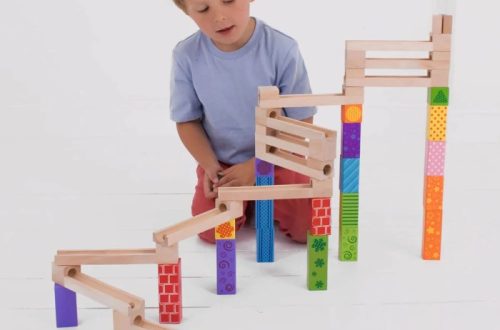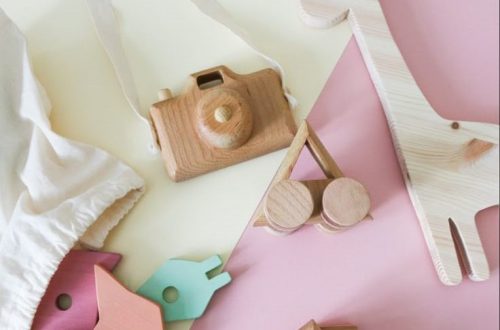What Are Montessori Toys?
DIY Montessori toys are designed to foster learning and independence. These toys encourage curiosity through hands-on exploration. They support children in developing critical skills like problem-solving and coordination.
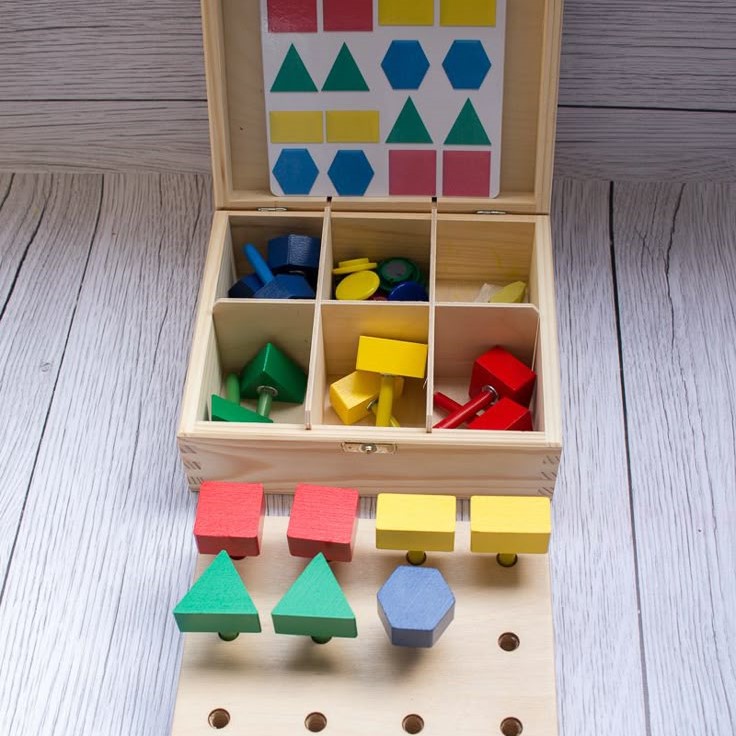
Characteristics of Montessori Toys
Montessori toys stand out due to their unique principles. First, they are simple and purposeful. Each toy focuses on one specific skill or concept. Second, Montessori toys are often made from natural materials like wood. These materials are safe and invite sensory exploration. Third, they are open-ended, allowing multiple ways to play. For example, wooden blocks can become towers, roads, or anything a child imagines. Lastly, Montessori toys are self-correcting. Children can see and fix mistakes without adult intervention, promoting independence.
Benefits of Montessori Toys for Child Development
Montessori toys offer various developmental advantages. They enhance fine and gross motor skills. Simple puzzles or stacking toys help develop hand-eye coordination. These toys also encourage problem-solving and concentration. For instance, matching or sorting activities require focus and logical thinking. Additionally, Montessori toys inspire creativity and imagination. Open-ended toys encourage children to explore and think outside the box. Finally, these toys promote self-confidence. By mastering tasks on their own, children feel a sense of achievement and pride.
Why Choose DIY Montessori Toys?
Creating DIY Montessori toys is a rewarding and practical choice for many families. These homemade toys offer unique benefits that enhance your child’s educational experience while accommodating your needs.
Cost-Effectiveness of DIY Options
DIY Montessori toys are budget-friendly compared to store-bought alternatives. Purchasing pre-made Montessori toys can be expensive. Making them yourself allows you to save money. Many DIY options use common household materials, eliminating the need for pricey purchases. For example, repurposing old jars or fabrics can serve as great learning tools. This approach ensures high-quality toys without exceeding your budget.
Customization for Your Child’s Needs
DIY Montessori toys can be tailored to match your child’s interests and developmental stage. Store-bought toys may not address specific needs or learning goals. Homemade options let you create toys that align with your child’s skills. For instance, if your toddler enjoys sorting, you can make a customizable sorting game with colored paper and containers. Personalizing toys ensures a more engaging and effective learning experience.
Eco-Friendly and Sustainable Benefits
DIY Montessori toys promote sustainability and help reduce waste. Many DIY projects repurpose items you already own. This avoids the need to buy plastic or non-recyclable toys. Wooden and fabric-based materials are environmentally friendly. Additionally, creating your own toys teaches children the value of recycling and creativity. By choosing DIY options, you make a positive impact on the environment and encourage eco-conscious habits.
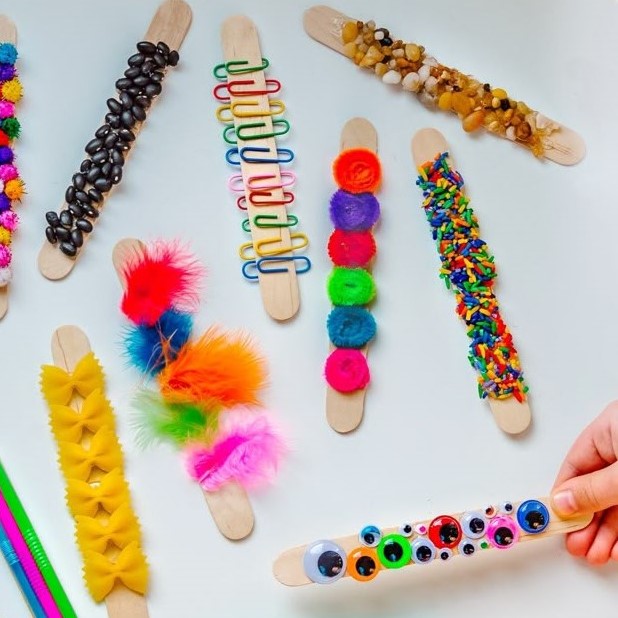
Essential Materials for Making DIY Montessori Toys
Creating DIY Montessori toys is fun and cost-effective. The right materials ensure safety and quality. Here are essential materials you’ll need.
Common Household Items You Can Repurpose
Everyday items make great Montessori toys. Repurposing these saves money and reduces waste.
- Old jars and lids: Ideal for sorting, stacking, or matching activities.
- Egg cartons: Perfect for organizing small items for color matching or counting games.
- Fabric scraps: Great for making sensory toys like bean bags or texture boards.
- Cardboard boxes: Use them to make puzzles, shape sorters, or pretend play items.
- Clothespins and rubber bands: Wonderful for fine motor skill activities such as pinching or stretching games.
- Bottle caps: Use them for sorting, counting, or as game tokens.
These items encourage creativity and are easy to find at home. Repurposing teaches children the value of reusing resources.
Safe and Non-Toxic Materials
Safety is crucial when making toys for children. Prioritize non-toxic, child-safe materials.
- Natural wood: Choose splinter-free and untreated wood for blocks or tools.
- Non-toxic paint or varnish: Use to color or seal toys safely.
- Organic fabrics: Cotton or wool is soft and chemical-free for dolls or sensory toys.
- Food-grade silicone: Excellent for teething toys or sensory items.
- Water-based glue: Safe for assembling toy components.
- Edible dyes: Perfect for coloring sensory items like rice or playdough.
Always double-check material safety. Avoid sharp edges, small parts, or harmful chemicals. Using safe materials ensures the well-being of your child while they play with and explore these toys.
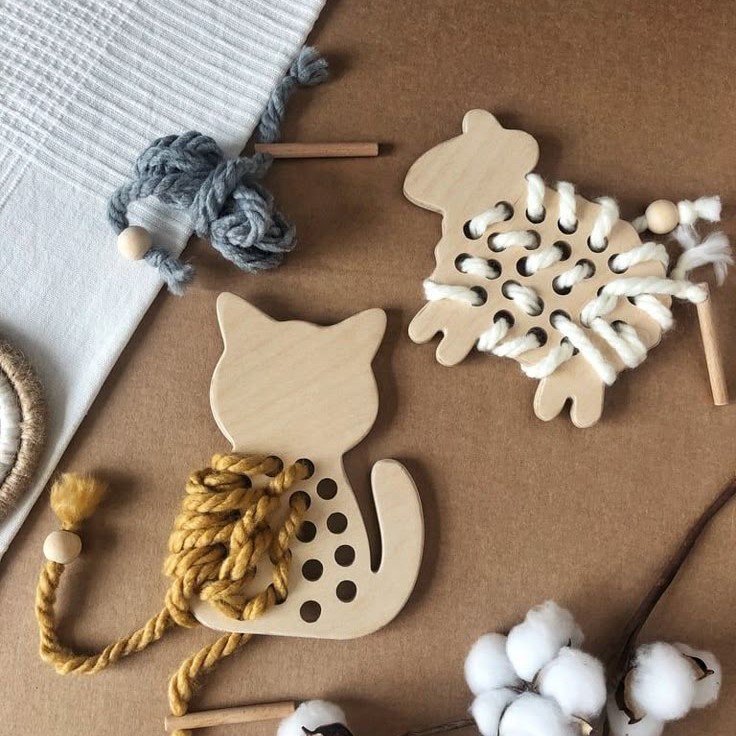
Step-by-Step Guide to Creating DIY Montessori Toys
Creating your own Montessori toys is a manageable and rewarding process. This guide breaks it into simple steps. Each project focuses on specific developmental skills. Here are ideas for sensory, sorting, and fine motor activities.
Simple Sensory Toys
Sensory toys stimulate a child’s sense of touch, sight, and hearing. They are easy to make at home.
- Texture Boards: Glue different fabric scraps (cotton, wool, felt) onto sturdy cardboard. Let children explore textures.
- Sensory Bottles: Fill clear bottles with water, glitter, and small objects. Seal tightly for safe play.
- Bean Bags: Fill fabric squares with dry beans or rice. Sew securely to create tossable, textured toys.
- Noise Makers: Use old jars filled with beans or rice. Kids can shake them to make sounds.
These toys improve sensory exploration and focus. Ensure all materials are safe and non-toxic.
DIY Puzzles and Sorting Activities
Puzzles and sorting games are great for problem-solving and coordination. They are versatile and simple to create.
- Cardboard Puzzles: Draw shapes on cardboard. Cut them out and let children match the cutouts.
- Sorting Games: Use egg cartons and bottle caps. Kids can sort by color or size.
- Matching Cards: Print or draw pairs of simple images on cardstock. Let children find matches.
- Shape Sorters: Cut various shapes out of cardboard boxes. Kids can match shapes to corresponding holes.
These activities promote logic, focus, and independence.
Handmade Fine Motor Skill Tools
Fine motor toys help strengthen hand muscles and coordination. Many tools can be made using simple items.
- Clothespin Games: Provide clothespins to clip onto edges of cardboard or fabric strips.
- Threading Beads: Use large wooden beads and shoelaces for threading. Avoid choking hazards with small parts.
- Lacing Boards: Punch holes in sturdy cardboard. Let kids lace through them using colorful strings.
- Buttoning Frames: Sew buttons onto fabric swatches. Kids can practice buttoning and unbuttoning.
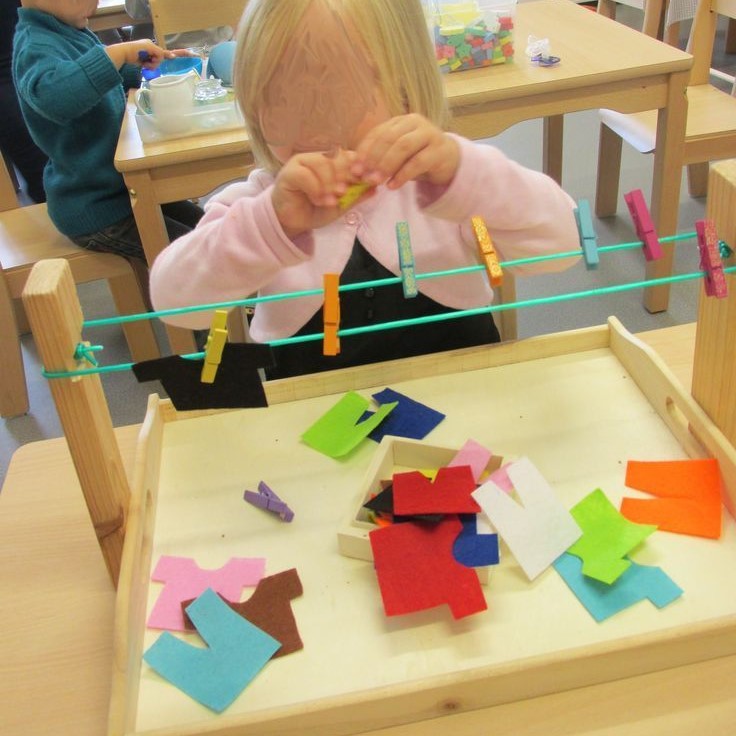
Follow these steps to craft engaging DIY Montessori toys. Each toy will support a specific learning skill. Adjust activities to suit your child’s age and ability.
Age-Appropriate DIY Montessori Toy Ideas
Creating DIY Montessori toys tailored to your child’s age sparks meaningful learning experiences. Age-specific activities ensure kids enjoy engaging in developmentally suitable tasks.
Toys for Infants (0-12 Months)
Infants benefit from toys that stimulate sensory exploration. Here are simple ideas:
- High-Contrast Cards: Use black and white patterns to help babies focus and stimulate vision.
- Soft Rattles: Sew fabric scraps into easy-to-grip shapes filled with beans or rice.
- Fabric Sensory Squares: Combine textures like cotton, felt, and velvet into squares for tactile exploration.
- Treasure Basket: Gather safe household items like wooden spoons and measuring cups for sensory play.
- Ring Stackers: Create stackable rings using smooth wooden circles for easy handling and coordination.
These toys encourage fine motor skills, sensory development, and curiosity.
Toys for Toddlers (1-3 Years)
Toddlers enjoy toys that foster problem-solving and early independence. Try these ideas:
- Shape Sorters: Cut various shapes in a cardboard box, matching pieces improve problem-solving skills.
- Color Matching Jars: Paint lids in different colors to match bottle caps with jars.
- Threading Games: Use shoelaces and large beads for threading activities to build coordination.
- Stacking Towers: Repurpose wooden blocks for building towers or structures.
- Sensory Rice Bin: Dye rice with edible dyes for scooping and pouring activities.
These toys promote focus, logical thinking, and refined motor skills.
Toys for Preschoolers (3-6 Years)
Preschoolers thrive on toys that expand creativity and independence. Consider these ideas:
- Buttoning Frames: Sew buttons onto fabric for buttoning and unbuttoning practice.
- DIY Puzzles: Cut pictures or shapes into parts and challenge kids to reassemble them.
- Lacing Boards: Punch holes in cardboard and provide strings for lacing activities.
- Sorting Games: Use egg cartons and colored items for sorting activities by color or size.
- Pretend Play Sets: Convert cardboard boxes into mini kitchens or toolsets for imaginative play.
These activities enrich problem-solving, creativity, and fine motor precision.
Tailoring Montessori toys by age nurtures growth while keeping playtime fun and educational.
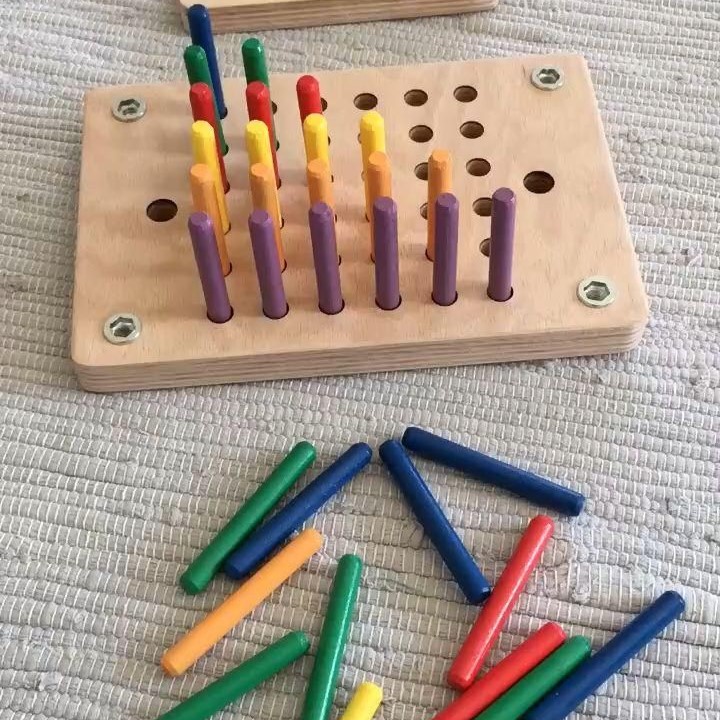
Tips to Ensure Safety and Usability
When creating DIY Montessori toys, safety and usability are paramount. Safe toys ensure worry-free playtime and enjoyment.
Guidelines for Child-Safe Toys
- Choose Non-Toxic Materials: Always use materials like natural wood, non-toxic paint, and water-based glue.
- Avoid Choking Hazards: Ensure small parts are secure or opt for larger components for young children.
- Eliminate Sharp Edges: Sand all wooden edges and avoid materials with splinters or cracks.
- Ensure Durable Construction: Properly assemble and secure toys to avoid breakage during play.
- Test for Safety: Inspect toys regularly for loose parts or signs of wear that could be harmful.
These guidelines minimize risks and enhance trust in the toys you make.
Maintaining and Cleaning DIY Toys
- Clean Regularly: Wipe toys with a damp cloth and mild soap to keep them germ-free.
- Use Natural Cleaning Methods: Utilize vinegar or baking soda for a chemical-free approach.
- Inspect Often: Check for damage like cracks, broken pieces, or peeling paint.
- Replace Worn-Out Toys: Avoid using toys that are damaged beyond repair.
- Store Safely: Keep toys in dry areas to prevent mold and dirt accumulation.
Proper maintenance ensures longevity and hygiene for continuous safe play. These practices also promote responsible use of DIY toys.
Inspiring Projects to Try Today
Creating DIY Montessori toys can inspire special learning moments. Below are projects you can try today to enhance creativity and education.
DIY Busy Board Ideas
Busy boards are versatile tools that engage children’s senses and motor skills. Create one with common household items:
- Latches and Locks: Attach simple locks, latches, and door handles for problem-solving tasks.
- Velcro and Zippers: Include zippers and Velcro for hands-on exploration and fine motor practice.
- Switches and Buttons: Add light switches or pressable buttons for sensory engagement.
- Color Matching: Paint sections with bold colors and attach corresponding items for matching activities.
- Spinning Wheels: Use old jar lids as spinning wheels for grasp and coordination exercises.
This project encourages independence and keeps children engaged for hours. Adjust complexity based on your child’s age.
Handcrafted Nature-Based Toys
Nature-based toys strengthen the bond between children and the environment. Here are simple ideas:
- Wooden Blocks: Carve blocks from untreated wood for stacking and pretend play.
- Leaf Prints: Gather leaves, dip them in child-safe paint, and create art prints on paper.
- Pinecone Threading: Use large needles and yarn to thread around pinecones for motor skill enhancement.
- Sensory Stones: Paint smooth stones with edible dyes for color sorting and sensory play.
- Twig Frames: Bind twigs into frames for imaginative space decoration or pretend play setups.
These toys promote eco-friendly habits and foster creativity through nature exploration.
Creating Montessori-Inspired Art and Craft Tools
Craft tools encourage artistic expression and fine motor development. Make these Montessori-inspired tools:
- Color Pencils Holders: Drill holes in wooden blocks to organize and hold color pencils.
- Paintbrushes From Nature: Use twigs and yarn to design paintbrushes for unique textures.
- Stamping Shapes: Cut patterns out of sponges for paint or ink stamping activities.
- Bead Organizers: Create compartments from egg cartons to sort beads by color or size.
- Tracing Boards: Carve letters or shapes into wood for reusable tracing practice.
These tools help kids develop creativity, coordination, and focus while exploring artistic skills.
Try these inspiring DIY projects to create meaningful play experiences for your child. Tailor ideas to match your child’s interests and abilities for a better learning journey.
Encouraging Independent Play with DIY Montessori Toys
Fostering independent play is a key principle of Montessori education. DIY Montessori toys can play a significant role in creating an environment that supports self-guided exploration and learning. By designing toys and spaces thoughtfully, you empower children to play independently while developing crucial skills.
How to Set Up a Montessori Play Space
A well-organized play space encourages focus, creativity, and independence. Here are steps to create one:
- Keep It Simple: Use minimal furniture and decor to reduce distractions and overstimulation.
- Accessible Shelving: Place open shelves at child-height to let kids easily choose and return toys.
- Organized Display: Arrange toys neatly in baskets, trays, or individual sections for clear visibility.
- Rotate Toys Regularly: Offer a small selection at a time and swap toys periodically to maintain interest.
- Natural Lighting: Use natural light to create a calm and inviting atmosphere.
- Defined Activity Areas: Separate spaces for activities like reading, building, and sensory play.
- Neutral Colors: Choose soothing, neutral tones for furniture and walls to create a peaceful environment.
A Montessori play space supports independent choices and minimizes the need for adult intervention. Tailor it to your child’s interests and developmental stage for the best results.
Building Confidence Through Independent Play
Independent play fosters self-confidence and problem-solving abilities. Here’s how DIY Montessori toys can help:
- Offer Open-Ended Toys: Toys with multiple uses, like blocks or sensory bins, inspire creativity and exploration.
- Choose Self-Correcting Tools: Items like puzzles allow children to identify and fix errors on their own.
- Encourage Problem Solving: Provide sorting or matching toys that challenge logic and reasoning.
- Promote Autonomy: Allow kids to play freely without guidance; this builds decision-making skills.
- Celebrate Achievements: Acknowledge efforts, not just outcomes, to reinforce pride in their abilities.
- Set Realistic Challenges: Provide toys that match your child’s skill level, ensuring tasks are neither too easy nor too hard.
By supporting independent play, you help children grow confident in their skills. This approach nurtures lifelong learning and curiosity.


